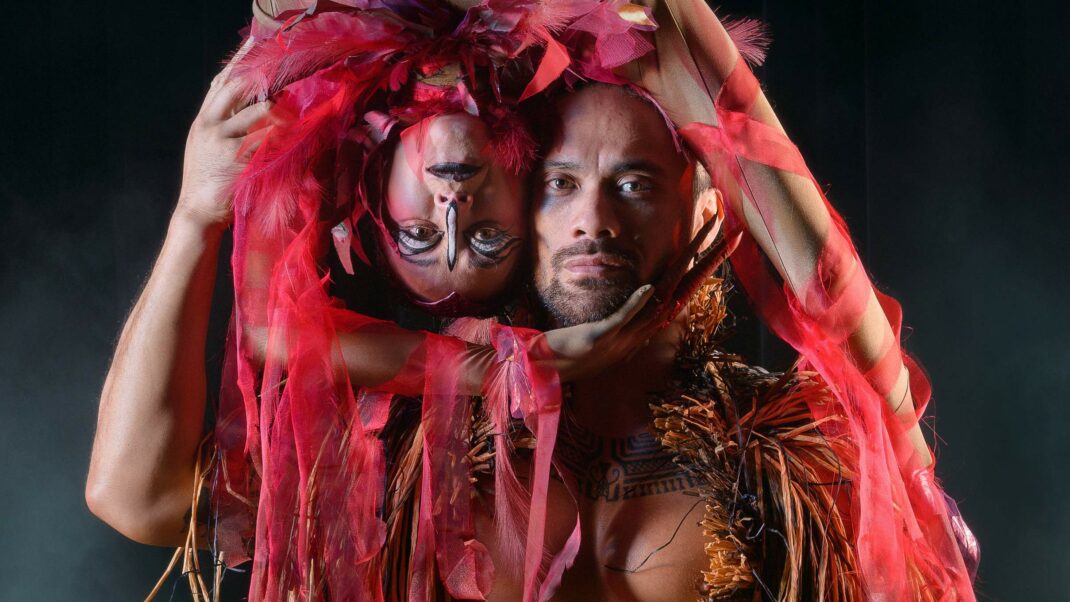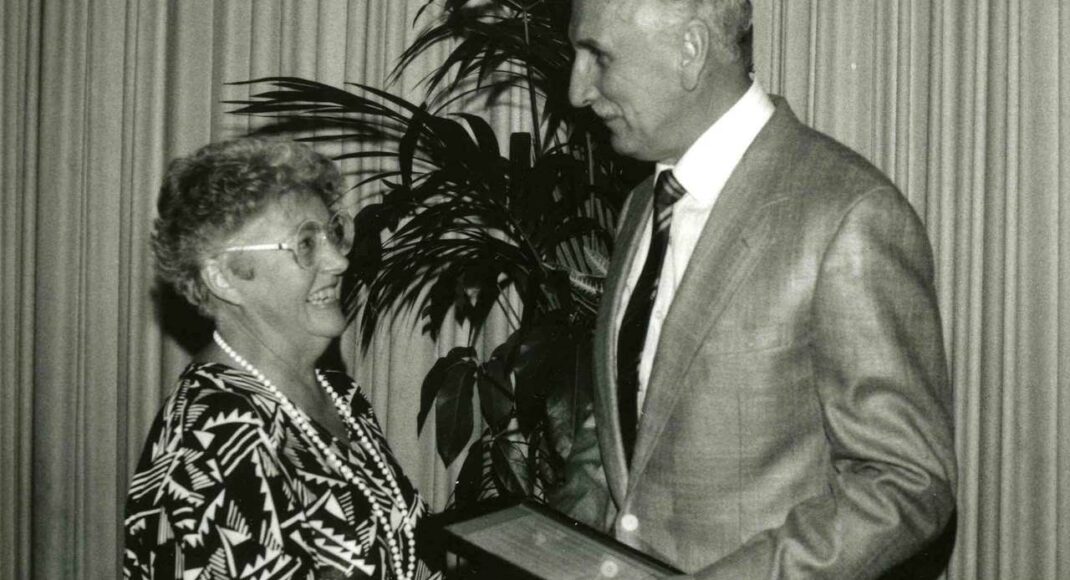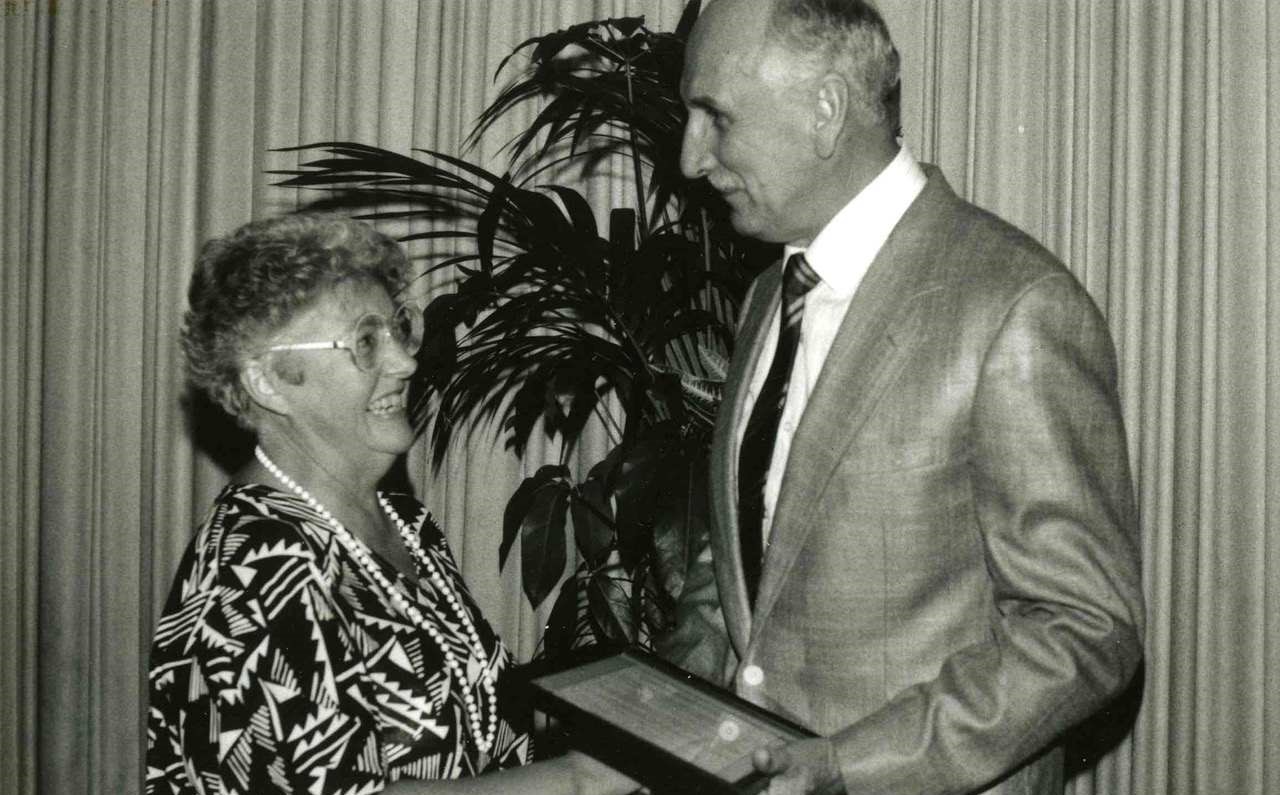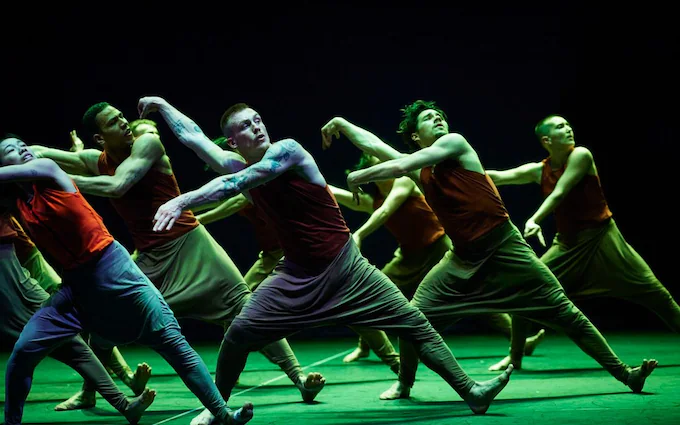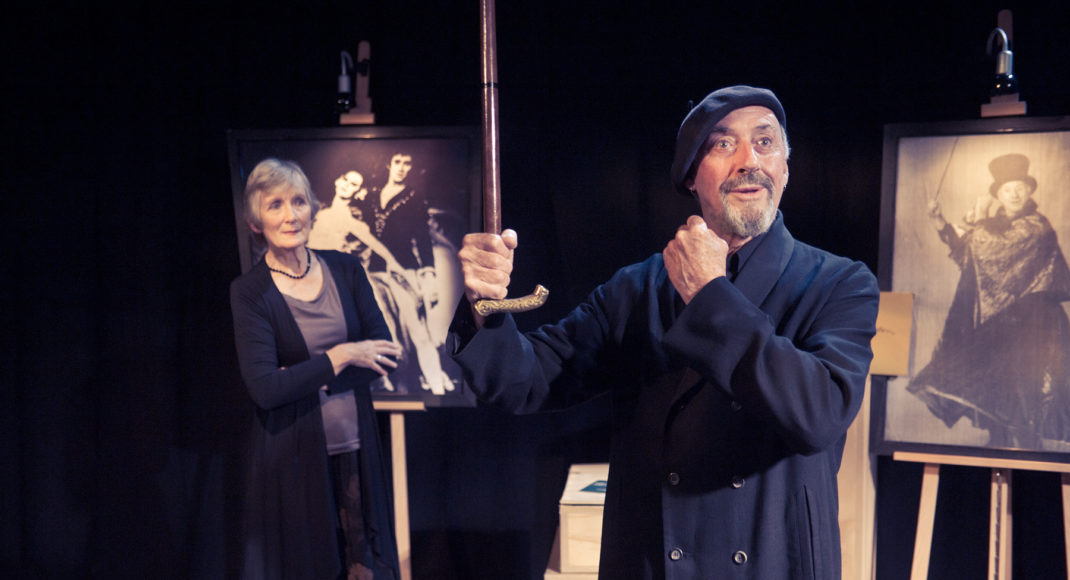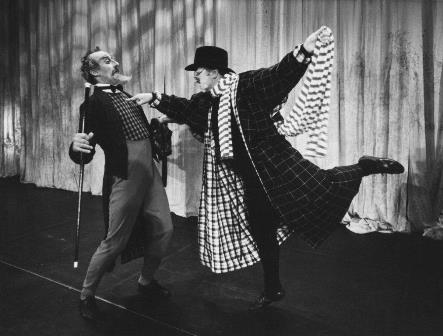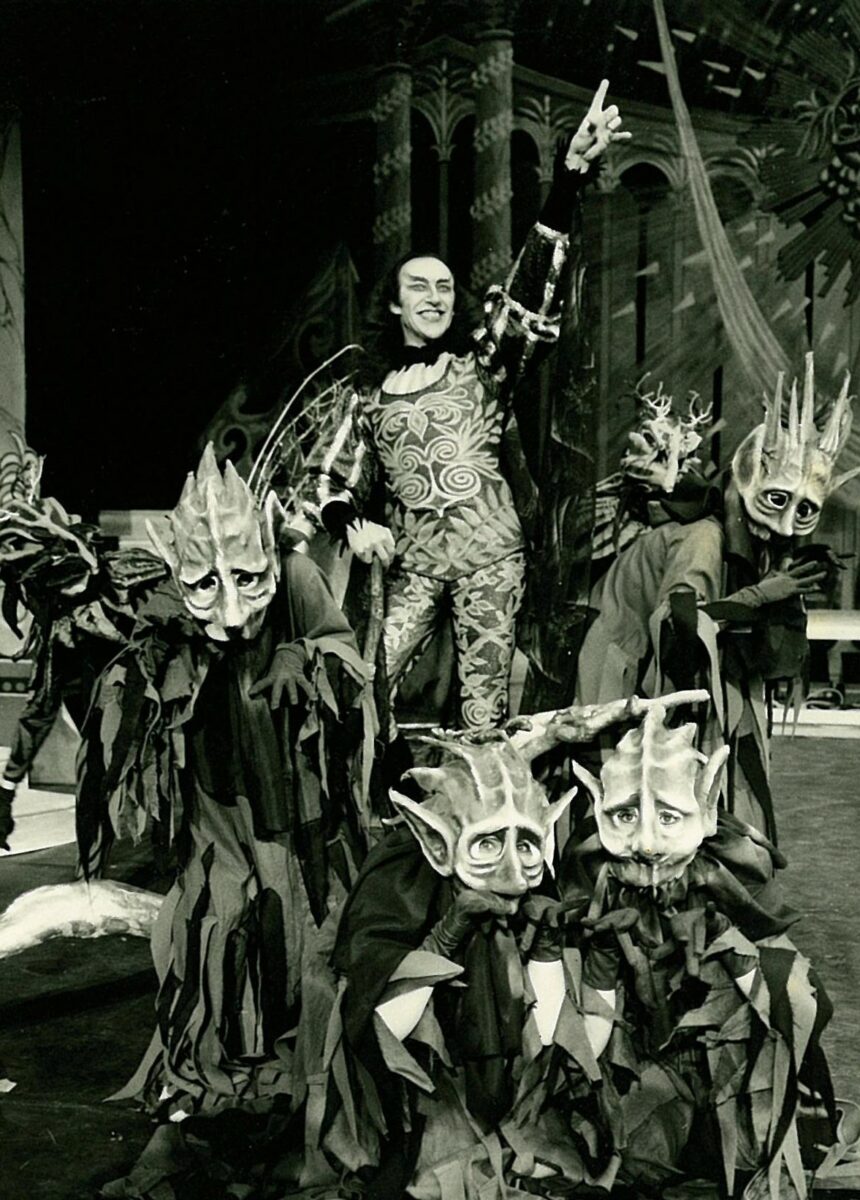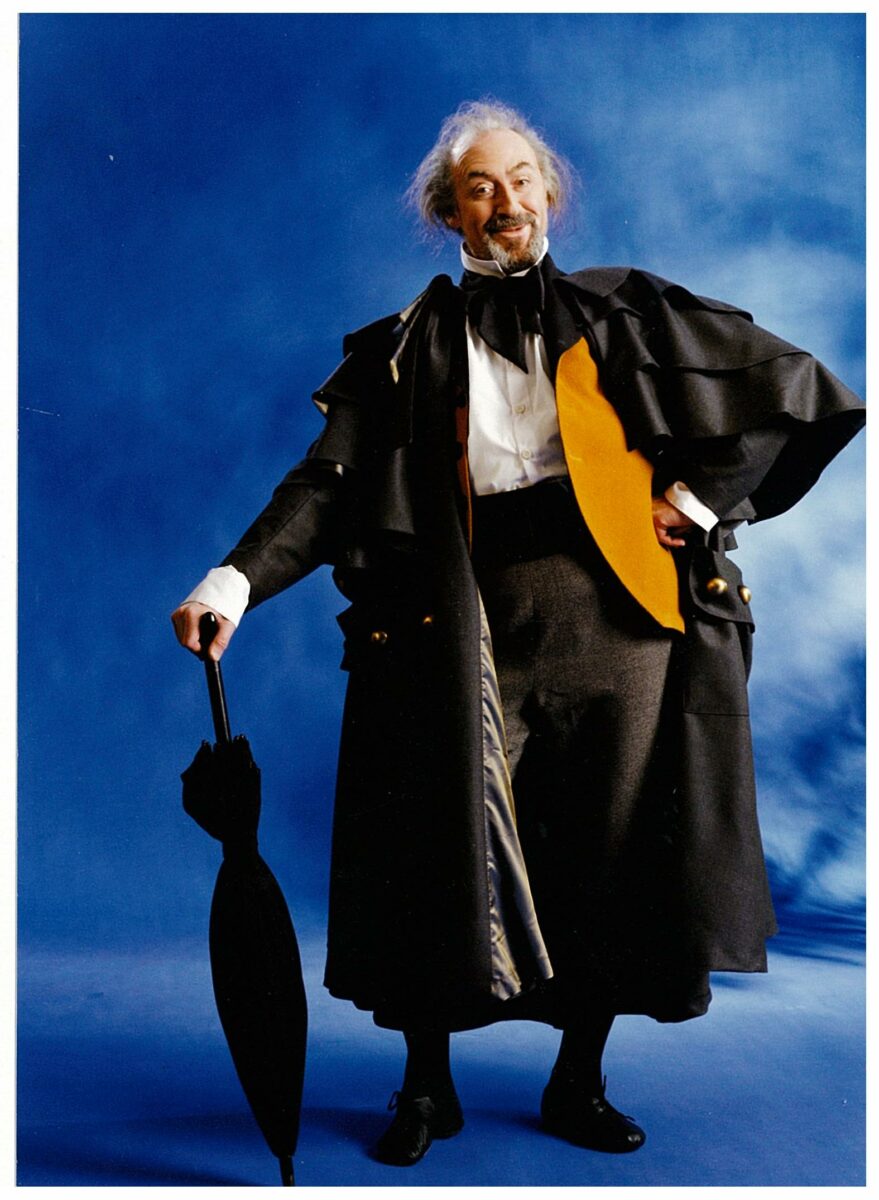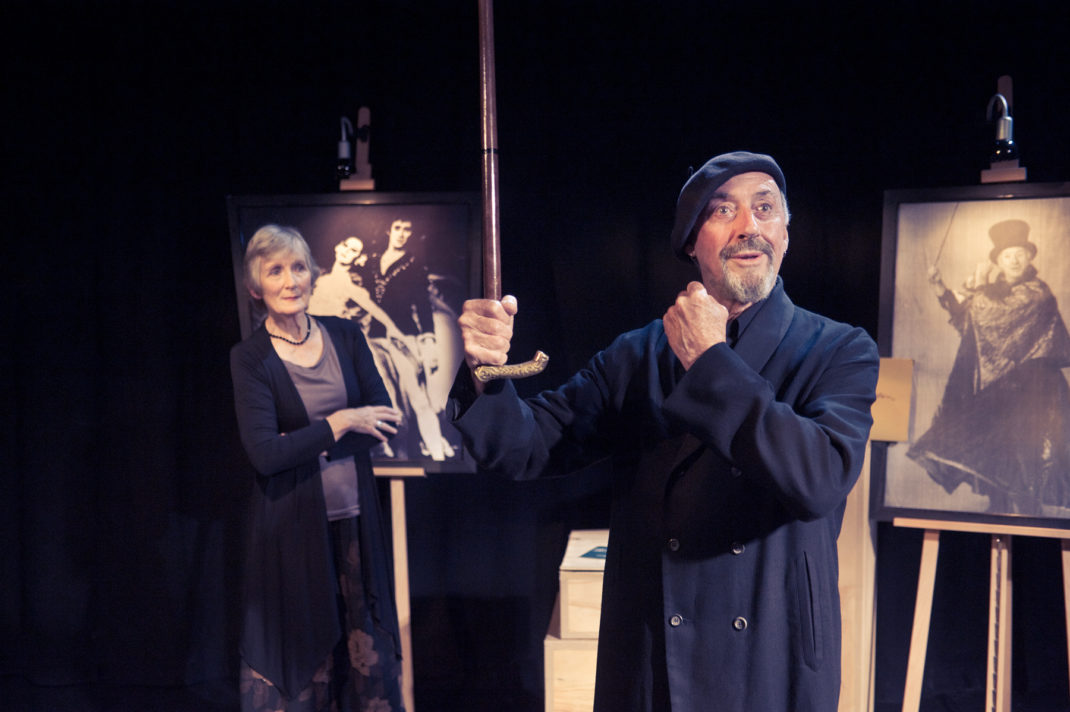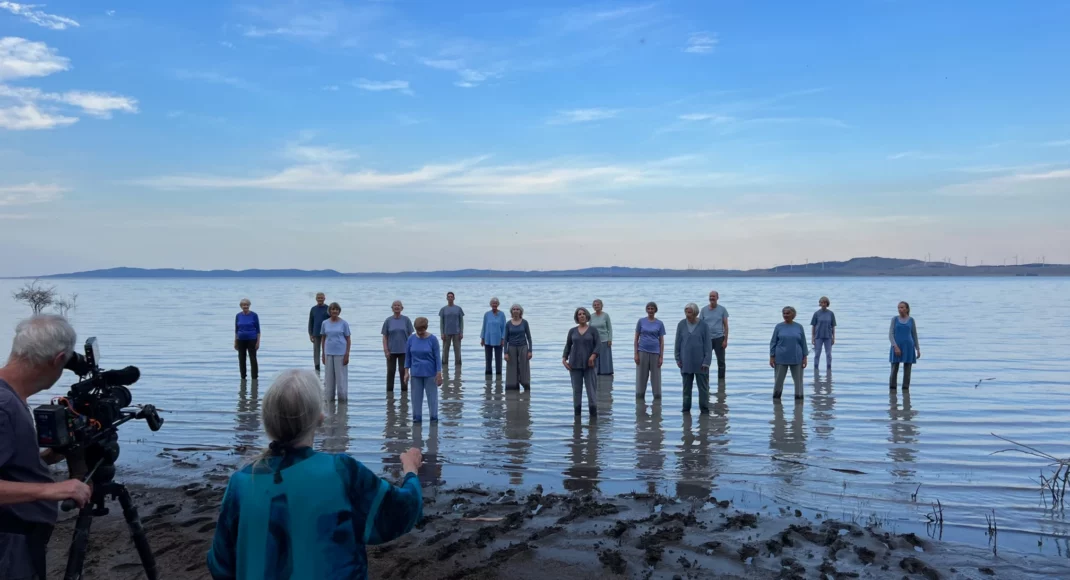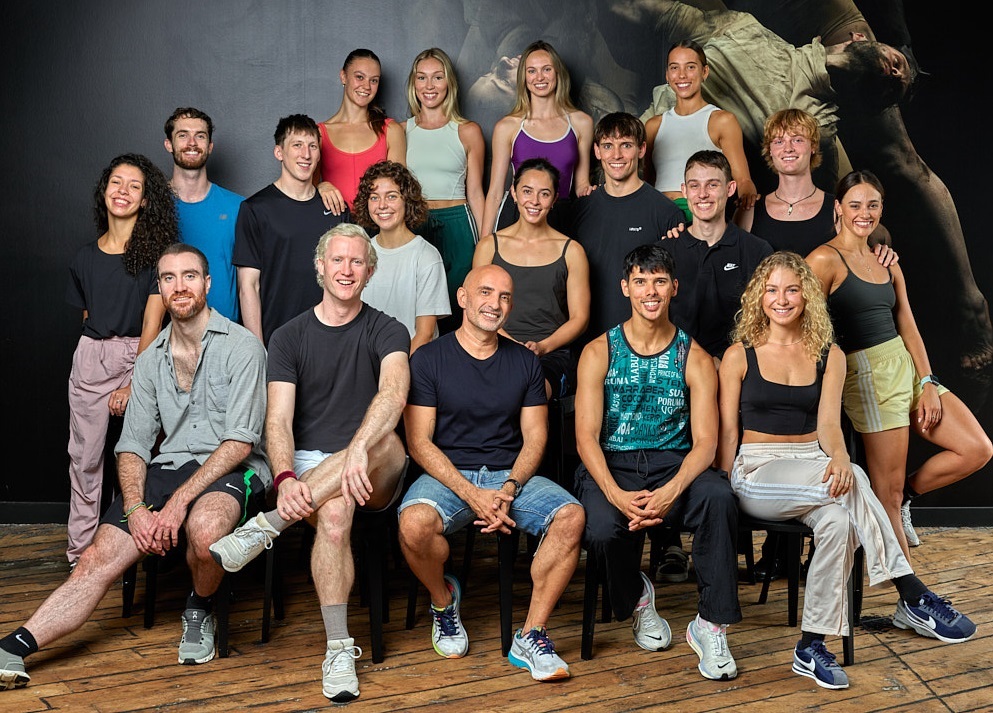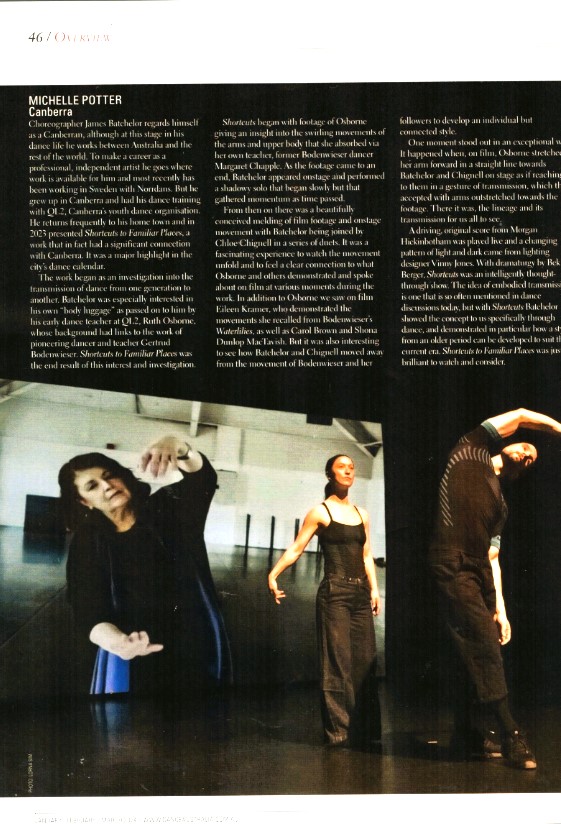Artistic Direction: Tānemahuta Gray
Kapa Haka choreography: Wētini Mītai-Ngãtai
at Tawhiri in Wellington. 20 – 24 February 2024 and following tour to Auckland, Christchurch & Rotorua
reviewed by Jennifer Shennan
It’s always a special moment for an audience when the poster image for a production is revealed in the course of play—only fleetingly, there it was, but we recognise it instantly since we have been looking forward to this show for some time and wondering how the combination of its many threads might weave together. And what an image it is, also on the program cover—a Maori man, Hatupatu, wearing a fine piupiu (woven fibre skirt), stands looking at us, his left fist strongly clenched, his right arm lifted to embrace the Maori bird-woman, Kurungaituku, who is suspended upside-down beside him, their cheeks adjacent, faces wreathed in red feathers and foliage, her bird body marked with feather shapes. It speaks of love and tragedy, of what is possible and what’s not, a man and a woman together but who can never be united, and one of them will die. The cryptic mystery of the legend of Hatupatu and the Bird-Woman is told in dialogue, all of it in te reo (Maori language), four males, gun performers of haka and taiaha. Female aerial artists are the birds, their urgent calls screeching out as they soar and sway overhead.
It is a courageous and innovative opening performance of the Aotearoa New Zealand Arts Festival, in a new venue that Wellington will see more of.
You’d have to be a visionary to even attempt such a production but if anyone can do it that would be Tānemahuta Gray in tandem with Taki Rua theatre enterprise. Tāne has been thinking for years about creating this show, let’s call it an aerial dance-play, drawn from a legend of Te Arawa Maori. It’s a remarkable project but he would be swift to credit the team of collaborators. Principal among those is Wētini Mītai-Ngatai, (of the leading cultural group in Rotorua, Te Mātārae I Ōrehu), who choreographed the kapa haka and taiaha sequences which Hatupatu and his three brothers deliver with power, precision and grace. There is contrasting humour when they goof around sparring with each other, to the great delight of the capacity audience which is seated or standing either side of the long thrust-stage. The Bird-Woman and her fellow creatures fly and soar above us, but without indulging in virtuosity merely to impress us. We are the more impressed by that.
Another stage at one end is backed by a drop screen with projected stunning images, stylised from the natural world phenomena around Rotorua. (Lucky me, I visited there by coincidence just last week so was thrilled to be reminded here of the wondrous dancing sands at Hamurana, the deafeningly wonderful waterfall at Okere, the fuming Pohutu geyser, the glorious soaring trees and exquisite bird life in the bush at Maungatautari). A trap door opens and recreates Pohutu geyser, and another trapdoor opens to reveal a mammoth cage in which the Bird Woman traps her man. These are all special effects that could go wrong 100 different ways. Nothing went wrong.
Paddy Free’s supportive sound score incorporated taonga puoro (traditional Maori music instruments) played by Alistair Fraser. John Verryt’s set design, Jo Kilgour’s lighting, Elizabeth Whiting’s and Amy Macaskill’s costume design are all faultless.
I specially appreciated the illuminated taniko weaving patterns that replaced a proscenium arch. That personified the title Taki Rua, the long-standing theatre company that presented this work. (Former director of Taki Rua, playwright Hone Kouka says of the name, ‘Taki Rua is a weaving pattern and means to go in twos—signifying the bi-cultural aspect of the theatre.’) This is an assembled tribe of Aotearoa New Zealand’s premier theatre artists all at their stunning best. Eds Eramiha as Hatupatu, a magnetic presence, is a natural performer across several genres without a cliché anywhere. Kasina Campbell as Kurungaituku is the compelling Bird Woman, every one of her gestures finely chiselled. Both are experienced in film, theatre and kapa haka so not a shred of performance nerves near them. Others in the cast include graduates from Toi Whakaari Drama School, Whitireia Performing Arts, Unitec, UCol, University of Auckland, New Zealand School of Dance, which accounts for a refreshing combination of performance styles.
Tāne Gray is himself a graduate of New Zealand School Dance and still maintains a presence for Maori tikanga there. This production carries further echo back to the 2001 season of Royal New Zealand Ballet’s Ihi FreNZy, which combined Mark Baldwin’s choreography to songs of Split Enz, and the kapa haka group of Te Mātārae I Ōrehu, led by Wētini Mītai-Ngātai. This production brings the promises from that early season to fruition here, 23 years later.
The production will now tour to Auckland, Christchurch and Rotorua—where I imagine the roof will lift off the venue, the audience rise in haka to applaud them, then everyone will be flying on high-wires.
Ka mua ka muri. Look back to look forwards.
Jennifer Shennan, 22 February 2024
Featured image: Hatupatu, played by Eds Eramiha, and Kurungaituku the Bird Woman played by Kasina Campbell. Photo: © Stephen A’Court
